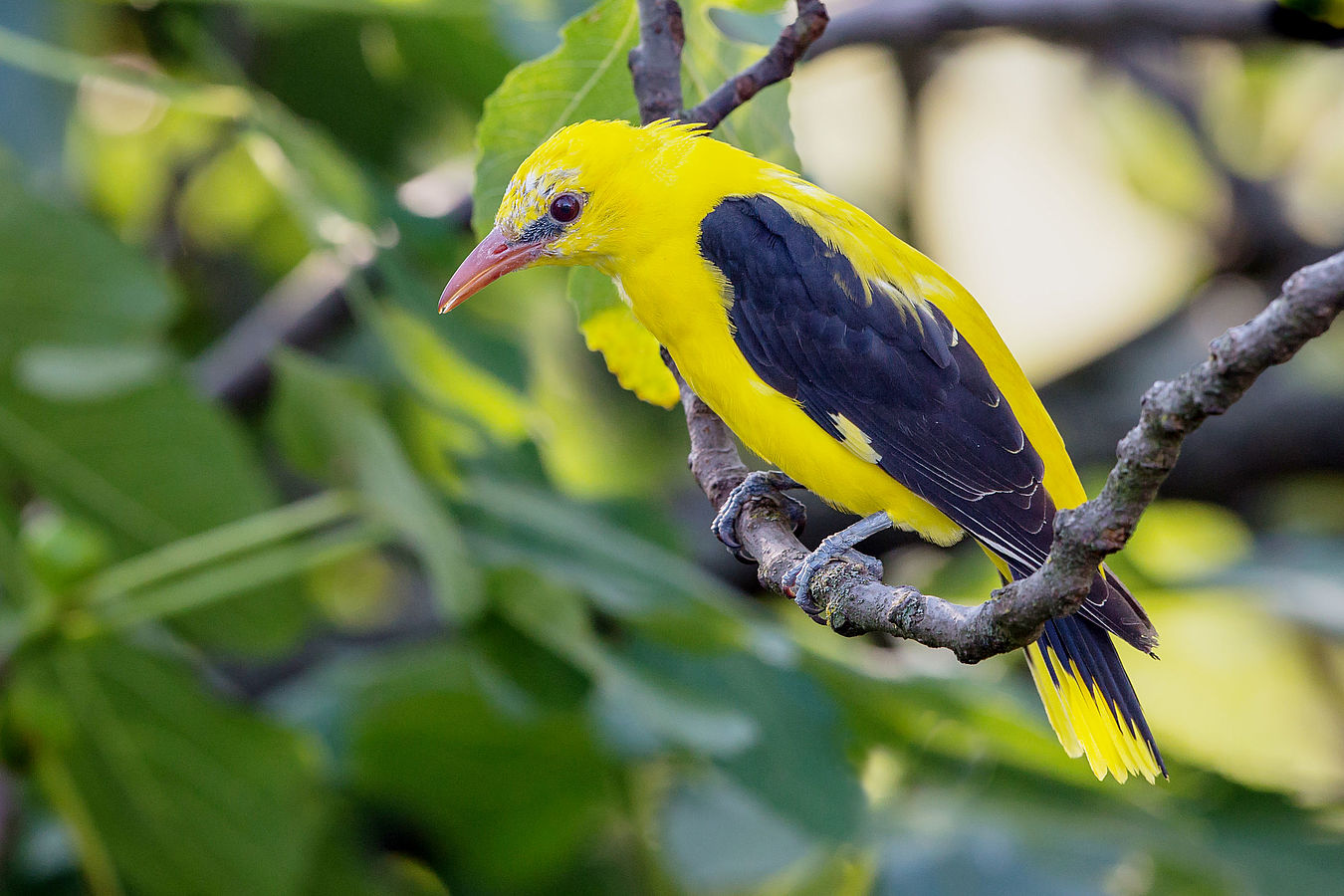The ability to adjust to changing environmental conditions is an essential prerequisite for species to cope with climate change.

Eurasian Golden Oriole / Pirol (Oriolus oriolus) | By Kookaburra 81 - Own work, CC BY-SA 4.0, https://commons.wikimedia.org/w/index.php?curid=59190887
Using stable isotope analysis, a team of scientists led by the Leibniz Institute for Zoo and Wildlife Research (Leibniz-IZW) now unravelled the link between wintering destinations of Eurasian Golden Oriole migrations and rainfall intensities in potential wintering grounds in sub-Saharan Africa. Analysing historical feathers from 1818 to 1971, they identified two distinct wintering areas whose use depended on prevailing rainfall intensity. The link between the key migratory overwintering destination and local precipitation demonstrates the dependence of these birds on rainfall in sub-Saharan Africa - a parameter that might change with climate change and related processes of desertification. The results are published in the scientific journal "Global Change Biology".
During their migration from Europe to Africa, migratory birds depend on a sequence of suitable habitats for travelling, refuelling and overwintering. This makes long-distance migrations particularly sensitive to changing conditions and precise knowledge of the conditions that shape these complex processes are needed. To locate the wintering grounds of Eurasian Golden Orioles (Oriolus oriolus) in sub-Saharan Africa over the past 200 years, a team of scientists led by Dr Stefania Milano and PD Dr Christian Voigt from the Leibniz-IZW Department of Evolutionary Ecology measured stable carbon, nitrogen and hydrogen isotope ratios in Oriole feathers from historical museum collections and extant birds. The isotope composition of feathers originates from the geographical area where the feather was produced, the moulting area. Afterwards, the isotopic composition is preserved unaltered for centuries and thus allows scientists to precisely locate the birds' place of moult in Africa even centuries later. "We identified two clusters of Golden Orioles based on their feather isotope values and were able to assign them to different wintering grounds", says lead author Milano. "The first cluster overwinters in south-eastern Africa while the second cluster concentrates in central Africa."
The historical perspective allowed the team to correlate the geographical data with temporal changes of environmental conditions. They found that the use of the two wintering areas varied greatly over time. For example, from 1842 to 1854 all analysed specimens travelled to south-eastern Africa, whereas from 1920 to 1948 almost 75 percent chose central Africa for overwintering. "Statistical analyses revealed that this variation is correlated with rainfall in the respective regions", explains Voigt. "The more rain in an area, the higher the proportion of Orioles overwintered there. And more importantly, less rain in central Africa resulted in many more birds going all the way down to south-eastern Africa."
The results show that precipitation in sub-Saharan wintering grounds have been particularly relevant for Golden Orioles during historical times. Changes in the rainfall prompted significant changes in their migratory behaviour. As climate projections for tropical and sub-tropical Africa indicate that some regions may see drier summers while others may experience more intense rainfall, the strong dependence of Orioles on high rainfall may force them to adjust their spatial migration patterns more substantially. An altered wintering behaviour of Golden Orioles in sub-Saharan Africa may also affect population changes and shifts within its breeding range in central and southern Europe as well as western Asia.
Milano S, Frahnert S, Hallau A, Töpfer T, Woog F, Voigt CC (2021):
Isotope record tracks changes in historical wintering ranges of a passerine in sub-Saharan Africa. Global Change Biology. DOI: 10.1111/gcb.15794






